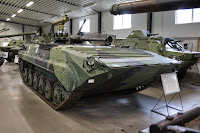One of the oldest Christmas traditions, that is still alive in Finland, is going to sauna on Christmas. This tradition dates back centuries. It is the custom of the Finnish phesants.
People prepared for sauna well, because many beliefs were connected to the Christmas sauna. Warming of the sauna, before electricity all saunas were heated with wood, became early in the morning or even during the night before the Christmas Eve. Sauna was visited during the daylight time, because it was believed that after the dark the sauna was used by the unseen chracters of the house (ancestors and elves) and the tenants of the house wanted to give those characters peace to visit the sauna. Please remember, that even in the Southern parts of Finland at this time of the year the sun rise at 9.25 and sets at 15.15. The length of the day is not even 6 hours. In up north the sun does not rise at all, so there is only few hours of dusk.
The sauna was also thought to be evil free at all time of the year. That is why no whistling or talking inappropriates were tolerated in the sauna. At Christmas sauna people were supposed to sit totally quiet. The mosquitos would tease next summer the one talking in the Christmas sauna.
Christmas sauna was very import for the Finns. The sauna has always been considered to be a sacred place in Finland. A place to wash and clean oneself, but also a place were to be born, to die and where the deceased were washed before putting to coffin.
Today attending a Christmas sauna lives strong in Finland. Some Finns visit the sauna already on 23rd, but quite many on Christmas Eve. The real Christmas sauna is still warmed up with wood and it is at its best, when there is snow on the ground. The sauna is attended on candle light. Of course the Christmas sauna can also be an electricity heated sauna at candle light or even without the candles.
In Finland only the northern parts are going to have a white Christmas this year, maybe also the Central-Finland. But we can still enjoy the warmth and humidity of the sauna. :)
I wish you all a Peaceful and Merry Christmas!












